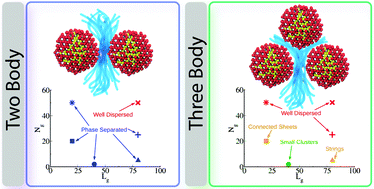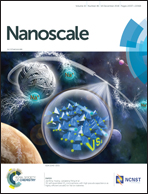Molecular structure and multi-body potential of mean force in silica-polystyrene nanocomposites†
Abstract
We perform a systematic application of the hybrid particle-field molecular dynamics technique [Milano, et al., J. Chem. Phys., 2009, 130, 214106] to study interfacial properties and potential of mean force (PMF) for separating nanoparticles (NPs) in a melt. Specifically, we consider Silica NPs bare or grafted with Polystyrene chains, aiming to shed light on the interactions among free and grafted chains affecting the dispersion of NPs in the nanocomposite. The proposed hybrid models show good performances in catching the local structure of the chains, and in particular their density profiles, documenting the existence of the “wet-brush-to-dry-brush” transition. By using these models, the PMF between pairs of ungrafted and grafted NPs in Polystyrene matrix are calculated. Moreover, we estimate the three-particle contribution to the total PMF and its role in regulating the phase separation on the nanometer scale. In particular, the multi-particle contribution to the PMF is able to give an explanation of the complex experimental morphologies observed at low grafting densities. More in general, we propose this approach and the models utilized here for a molecular understanding of specific systems and the impact of the chemical nature of the systems on the composite final properties.



 Please wait while we load your content...
Please wait while we load your content...